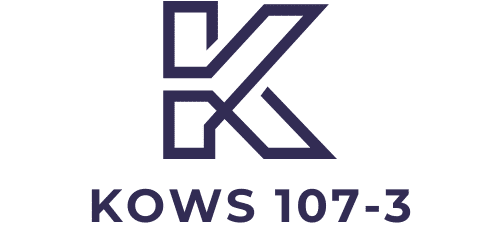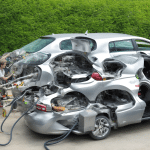The quality of air within indoor environments significantly impacts our health and wellbeing. As such, the interest in innovative solutions for improving air quality in buildings has been on a steady rise. This article explores various innovative air purification and ventilation solutions, and how they can be integrated into real estate projects for improved health benefits.
A Look At The Impact of Indoor Air Quality on Health
Indoor air quality (IAQ) often refers to the air quality within and around buildings and structures, particularly as it relates to the health and comfort of building occupants. Yet, the importance of indoor air quality cannot be overemphasized.
A lire aussi : What are the best practices for ensuring the structural integrity of real estate developments in extreme weather regions?
The U.S. Environmental Protection Agency reports that indoor levels of pollutants may be two to five times higher than outdoor levels. These pollutants include particles such as dust, bacteria, and viruses, as well as volatile organic compounds and other harmful chemicals. Prolonged exposure to these pollutants can lead to numerous health issues, such as allergies, asthma, and even more severe health conditions.
With the majority of people spending around 90% of their time in indoor environments, improving the quality of indoor air has become a growing concern for both health experts and real estate developers.
A découvrir également : How can augmented and virtual reality technologies be used in the marketing and sale of real estate properties?
The Role of HVAC Systems in Improving Indoor Air Quality
Heating, Ventilation, and Air Conditioning (HVAC) systems play a crucial role in maintaining healthy indoor air quality. They do this by controlling the distribution and movement of air within buildings.
Modern HVAC systems are designed to filter out pollutants and supply fresh air to indoor spaces, thereby reducing the concentration of pollutants in the air. Yet, not all HVAC systems are created equal. The efficiency of a HVAC system in improving indoor air quality largely depends on its design, installation, and maintenance.
Emerging HVAC technologies are increasingly incorporating air purification functions. For instance, some HVAC systems now feature UV lights capable of neutralizing harmful bacteria and viruses. Others include advanced filtration systems that can capture even the smallest particles. Integrating these innovative HVAC technologies into real estate projects guarantees healthier indoor environments.
Energy-Efficient Ventilation Solutions for Buildings
While HVAC systems are vital for maintaining indoor air quality, they also consume a significant amount of energy. According to the U.S. Department of Energy, HVAC systems account for approximately 48% of a typical U.S. home’s energy usage.
Hence, it’s important to consider energy-efficient ventilation solutions. For instance, Energy Recovery Ventilation (ERV) systems are becoming increasingly popular in modern buildings. ERV systems work by recovering energy from exhaust air and using it to precondition incoming fresh air. This not only improves air quality but also reduces energy consumption.
Another remarkable solution is the usage of solar ventilation systems. These systems use solar energy to power the ventilation process, thereby reducing dependence on electrical power and further enhancing energy efficiency.
The Emergence of Smart Air Purification Solutions
Beyond HVAC and ventilation systems, air purification technologies have substantially evolved. The emergence of smart air purification solutions holds great promise for improving indoor air quality.
Smart air purifiers are equipped with sensors that monitor the air quality in real-time. When the sensors detect a rise in pollutants, the purifiers adjust their operation to increase the purification rate. Some smart purifiers even connect to mobile apps, allowing users to monitor and control the air quality remotely.
Additionally, some real estate projects now incorporate plants into their design as a natural form of air purification. Certain plants are known to absorb pollutants such as formaldehyde, benzene, and trichloroethylene, thereby improving indoor air quality.
Implementing Air Purification and Ventilation Solutions in Building Construction
To effectively integrate air purification and ventilation solutions into real estate, it’s essential to consider these systems in the building design phase. This allows for seamless implementation and enables the building to take full advantage of these health-enhancing technologies.
For example, the building’s design could include provisions for the installation of advanced HVAC systems, smart purifiers, and energy-efficient ventilation systems. Similarly, the design could incorporate green spaces for natural air purification. This way, the building is not just built to serve its purpose, but also to promote the health of its occupants.
In conclusion, the integration of innovative air purification and ventilation solutions into real estate projects is an investment in health. It not only ensures a healthy indoor environment but also contributes to the overall wellbeing of building occupants.
The Role of Renewable Energy in Air Conditioning and Purification Systems
Renewable energy sources play a significant role in powering air conditioning and purification systems, thereby contributing to the sustainability of buildings and the wellbeing of occupants. Solar panels, wind turbines, and other renewable energy systems are increasingly being used to power HVAC systems, reducing the buildings’ reliance on non-renewable energy sources.
Solar air conditioning, for instance, uses solar energy to cool indoor environments. Solar panels collect solar energy and convert it into electricity, which is then used to power the air conditioning system. This process significantly reduces energy consumption and the associated costs.
Similarly, renewable energy can be used to power air purification systems. For instance, air purifiers can be powered by solar energy or bioenergy, further enhancing the energy efficiency of buildings.
Moreover, the integration of renewable energy into HVAC and purification systems significantly reduces greenhouse gas emissions, contributing to the fight against climate change. This makes renewable energy an essential component of healthy and sustainable buildings.
However, the successful integration of renewable energy solutions in real estate projects requires careful planning and design. Building owners and developers should collaborate with energy experts and engineers to design and install efficient renewable energy systems.
The Role of Google Scholar in Advancing Air Purification and Ventilation Solutions
Google Scholar, a freely accessible web search engine that indexes scholarly literature across many disciplines and sources, has significantly contributed to the advancement of air purification and ventilation solutions. Through Google Scholar, researchers and developers can access a wealth of information and research findings on the latest technologies, designs, and strategies for improving indoor air quality.
For instance, Google Scholar provides access to numerous research papers, theses, books, conference papers, and patents on air cleaning technologies, energy-efficient ventilation solutions, and the impact of indoor air quality on public health. This wealth of information fuels innovation, guiding the development of more effective and efficient air purification and ventilation solutions.
By leveraging Google Scholar, real estate developers, architects, and engineers can stay abreast of the latest advances in indoor environment technologies and integrate them into their projects. This will not only improve the quality of indoor air, but also contribute to the energy efficiency, sustainability, and overall healthiness of buildings.
Conclusion
In conclusion, the integration of innovative air purification and ventilation solutions significantly enhances the quality of indoor air and the overall health of building occupants. From advanced HVAC systems and smart air purifiers to energy-efficient ventilation solutions and renewable energy systems, these technologies play a crucial role in creating healthy buildings.
Moreover, resources like Google Scholar provide invaluable information that fosters innovation in this field, leading to the development of more effective and efficient solutions.
As we move forward, it’s clear that improving indoor air quality and reducing energy consumption will remain key priorities for real estate developers and building owners. By investing in these innovative solutions, we can create healthier and more sustainable indoor environments, contributing to the wellbeing of individuals and the health of our planet.






